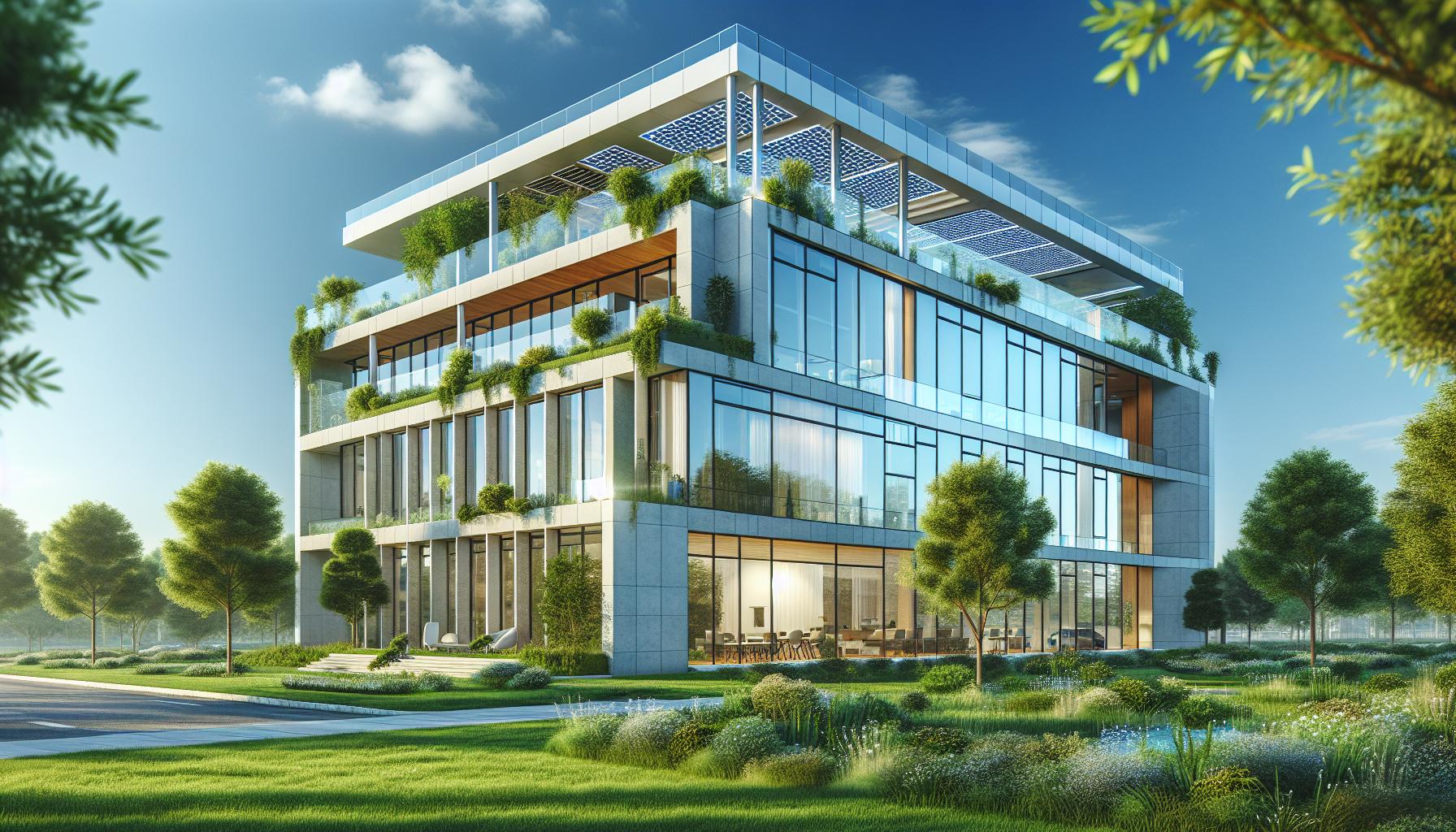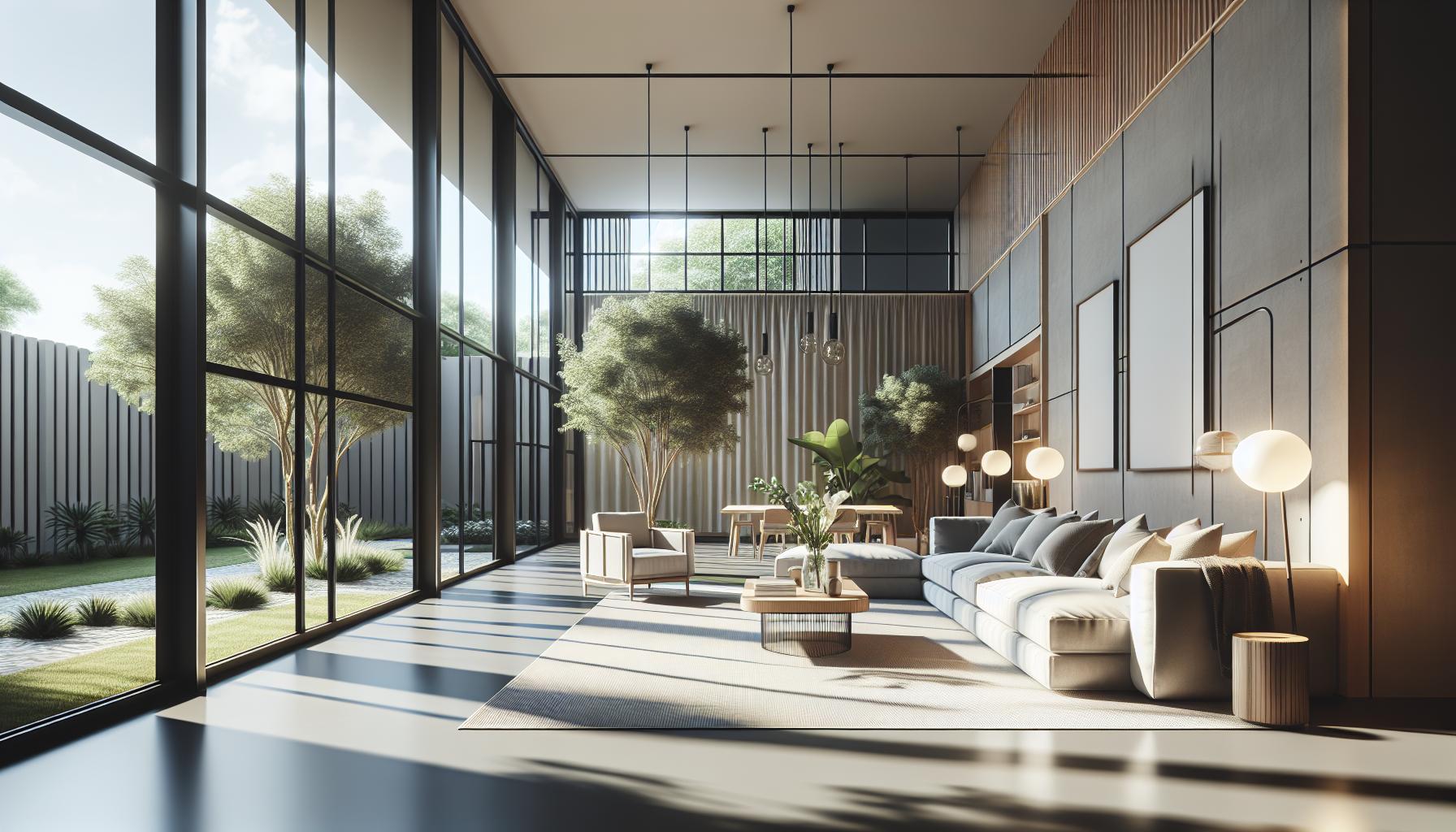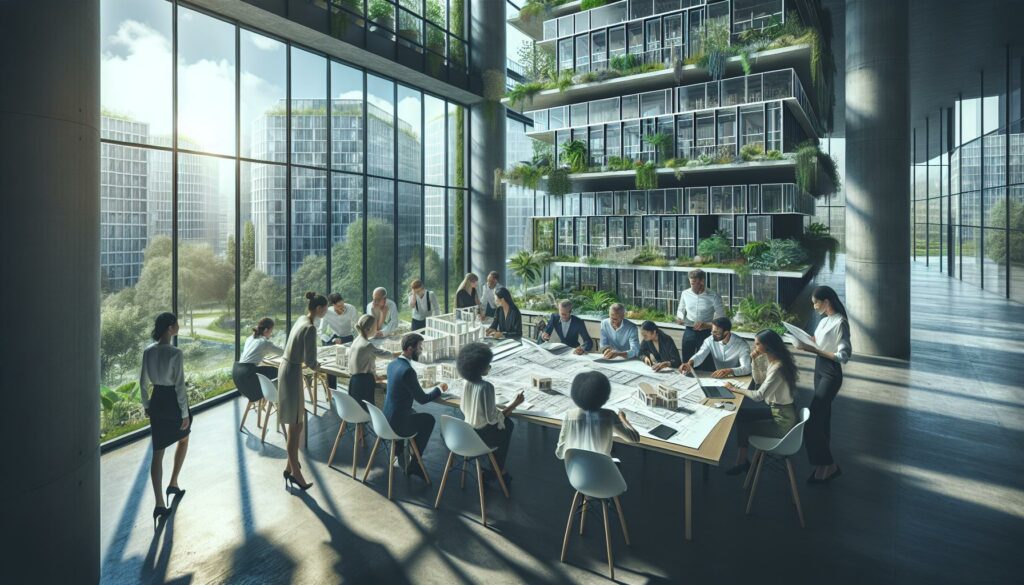Architecture isn’t just about building structures; it’s about creating experiences that resonate with people. In a world where trends change faster than a cat video goes viral, staying updated on current architectural trends is essential. From eco-friendly designs that make Mother Nature proud to innovative materials that defy gravity, today’s architects are pushing boundaries like never before.
Imagine walking into a space that feels both futuristic and cozy, where sustainability meets style. It’s not just a dream; it’s the new reality in architecture. As urban landscapes evolve and technology advances, these trends are shaping the way we live and interact with our surroundings. Buckle up as we explore the latest architectural marvels that are turning heads and redefining what it means to call a place home.
Current Architectural Trends
Current architectural trends emphasize sustainability and innovation. Designers focus on eco-friendly materials, enhancing energy efficiency in residential and commercial buildings. Biophilic design increases natural light and incorporates greenery, improving occupants’ well-being. Modular construction gains popularity due to its time and cost efficiency, allowing quicker project completions.
Smart technology integration becomes essential in modern designs. Automating systems for lighting, heating, and security enhances user convenience. These innovations also promote energy conservation, aligning with eco-conscious goals. Adaptable spaces cater to changing lifestyles, making multifunctional areas more desirable.
Community-centric designs prioritize social interaction and inclusivity. Creating public spaces encourages community engagement and fosters connections among residents. Urban planning increasingly incorporates walkability, emphasizing accessibility and improved quality of life.
Architectural aesthetics evolve alongside functionality. Minimalism remains influential, with clean lines and uncluttered spaces promoting a sense of calm. Sustainable materials often showcase natural textures and colors, enhancing visual appeal. Innovative shapes and dynamic structures challenge traditional design norms, creating striking landmarks in urban settings.
Cultural influences shape architectural choices as well. Reflecting local heritage fosters a sense of identity and belonging. Architects embrace regional materials, textures, and forms, celebrating local history while addressing modern needs. This fusion of past and present enriches the built environment and resonates with communities.
Current architectural trends emphasize sustainability, technology, and community. Enhancing quality of life through thoughtful design creates spaces that inspire and connect individuals within their environments.
Sustainability in Architecture


Sustainability remains a crucial focus in contemporary architecture. This trend emphasizes reducing environmental impact while enhancing user experience through thoughtful design.
Green Building Practices
Green building practices promote the use of sustainable materials and construction methods. Incorporating recycled materials reduces waste and conserves resources. Designers utilize local materials to minimize transportation emissions, supporting regional economies. LEED certification encourages developers to adopt eco-friendly strategies, aligning with both environmental goals and market demands. Building orientation often maximizes natural ventilation and daylight, improving indoor air quality. These practices create healthier living spaces while contributing to a sustainable future.
Energy Efficiency Solutions
Energy efficiency solutions play a vital role in modern architecture. Installing energy-efficient systems reduces consumption and lowers utility costs. Designers prioritize high-performance windows that enhance insulation, reducing heating and cooling needs. Smart home technologies optimize energy use through real-time monitoring and automation. Renewable energy sources like solar panels are integrated into designs, further decreasing reliance on fossil fuels. As regulations for energy efficiency become stricter, architects innovate to meet these requirements while maintaining aesthetic appeal.
Technology Integration


Technology significantly influences architectural design, enhancing both functionality and user experience. Innovations streamline construction and improve building management.
Smart Homes and Buildings
Smart technology revolutionizes residential and commercial spaces. Automated systems allow users to control lighting, heating, and security through smartphones. Connectivity prioritizes energy conservation, reducing utility costs while enhancing comfort. For instance, smart thermostats can adjust temperature patterns based on occupant behavior. Integration of sensors within buildings increases operational efficiency, optimizing resource consumption. Overall, these advancements transform traditional spaces into dynamic environments that adapt to users’ needs.
Virtual Reality in Design
Virtual reality transforms architectural visualization. Designers present immersive experiences, allowing clients to explore spaces before construction begins. This technology streamlines decision-making and reduces costly modifications during the building process. For example, architects create virtual walkthroughs to showcase design concepts. Collaboration also benefits, as teams can refine ideas in real time. By enhancing engagement, virtual reality fosters a deeper understanding of projects among stakeholders and clients.
Design Aesthetics


Architectural design aesthetics are currently influenced by various trends that prioritize functionality, sustainability, and user experience. Spaces today reflect both beauty and practicality, appealing to both residents and visitors alike.
Minimalism and Simplicity
Minimalism promotes a clean and uncluttered look, emphasizing less as more. Designers use simple lines and neutral colors to create harmonious environments. Open floor plans enhance flow and functionality, allowing occupants to feel connected to their surroundings. This approach addresses the demand for spaces where clutter is absent, promoting tranquility. Furnishings often feature natural materials, reflecting a commitment to simplicity and sustainability. Emphasizing unobtrusive designs fosters a sense of spaciousness in urban environments.
Biophilic Design Concepts
Biophilic design strengthens the connection between people and nature within architectural spaces. Incorporating natural elements, such as plants and water features, brings life to interiors and exteriors. Increased natural light through expansive windows enhances well-being and mood. Designers often select materials that mimic natural textures, creating a soothing experience. Green walls and urban gardens support biodiversity while improving air quality. Spaces that utilize biophilic elements not only captivate visually but also promote healthier living environments. By integrating nature, architecture today transforms how individuals engage with their surroundings.
Urban Development Trends
Urban development trends emphasize the integration of diverse community needs and sustainable practices in architecture. Mixed-use developments and affordable housing initiatives are gaining prominence, reflecting a shift toward inclusive urban environments.
Mixed-Use Spaces
Mixed-use spaces combine residential, commercial, and recreational areas within a single development. This approach enhances accessibility and fosters vibrant communities. It encourages social interaction by bringing together diverse user groups, allowing for a dynamic urban experience. Developers are increasingly prioritizing these spaces to create walkable neighborhoods, reducing reliance on automobiles. In cities like London and New York, successful mixed-use projects have revitalized formerly underutilized areas, demonstrating the effectiveness of this trend.
Affordable Housing Initiatives
Affordable housing initiatives address the pressing need for accessible living options in urban areas. These programs aim to create safe and sustainable homes for low- to moderate-income residents. Innovative designs and public-private partnerships are addressing the housing crisis by providing efficient, cost-effective solutions. Cities like San Francisco and Seattle are implementing policies to promote the development of affordable units, reflecting a commitment to inclusivity. Thus, these initiatives not only enhance housing options but also strengthen community bonds through mixed-income developments.
Future of Architecture
The landscape of architecture is evolving rapidly as it embraces sustainability and innovation. Designers are creating spaces that not only meet functional needs but also enhance the quality of life for occupants. By integrating smart technologies and prioritizing eco-friendly practices, architects are redefining how buildings interact with their environments.
Community-centric designs are fostering social connections while reflecting local culture and heritage. As trends continue to shift towards minimalism and biophilic elements, architecture is becoming a more holistic approach to living. These developments promise to shape future urban environments, making them more inclusive and sustainable for generations to come.



